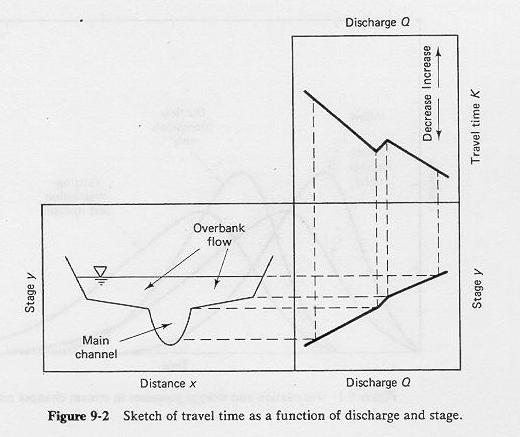|
|
CIVE 445 - ENGINEERING HYDROLOGY
SPRING 2008 - MIDTERM 1 - SOLUTION
|
1. What four types of mathematical models are used in hydrology? Define each type.
- Deterministic: based on general physical laws
- Probabilistic (Statistical/stochastic): based on laws of chance
- Conceptual: simplified representation, valid everywhere
- Parametric (empirical): valid only for specific site
2. Where does precipitation come from?
-
Precipitation comes from evaporation of bodies of water, typically from the ocean.
3. What is the return period associated with the Probable Maximum Precipitation?
4. Which factor affecting precipitation is readily subject to modification by humans?
-
The land surface, through changes in texture, color, and moisture content of the soil.
5. What is the difference between potential and actual evapotranspiration?
- Potential evapotranspiration occurs under an ample supply of moisture.
- Actual evapotranspiration occurs in reality, when moisture may be limited.
6. What four factors affect time of concentration?
- Catchment length (hydraulic length) L
- Channel slope (channel slope) S
- Friction coefficient (Manning) n
- (Effective) rainfall intensity i.
7. How does time of concentration vary with flood stage? Draw a sketch for a wide range of flood stages.
-
low flow: time of concentration is long
- high inbank flow: time of concentration reduces
- low overbank flow: time of concentration increases
- high overbank flow: time of concentration decreases
8. What is baseflow? Where does it come from?
- Baseflow is the dry-weather flow of streams and rivers.
- Baseflow comes from the groundwater as it exfiltrates at springs located at lower elevations.
9. What do the Creager curves depict?
- They depict the diffusion that is present in streamflow.
- The Creager curves state that the greater the catchment area,
the smaller the peak flow per unit of catchment area.
10. To what five factors is to be attributed the recurrence of debris flows in the San Gabriel
Mountains of Northeast Los Angeles? State them in causal order.
- The uplift (through tectonism) of the mountain range (reported to be
the highest in the U.S.).
- The type of vegetative ecosystem (mediterranean, chaparral), which has developed adaptations
to survive through droughts, including waxed leaf surfaces to minimize evapotranspiration.
The mediterranean ecosystem
occurs in midlatitudes (30o-35o) that have exposure to
westerlies (trade winds from
the west).
- The wind storms (Santa Ana), which affects the region.
- The wildland fires, propelled by drought and wind,
which recur approximately every thirty years in chaparral ecosystems. The fires vaporize the waxy substances
(in the litter and standing biomass) at the surface,
and condense 1-5 cm inside the soil, creating the hydrophobic soil layer.
- The intense rainfall events, exceeding 1 in/hr,
which follow the fire because of enhanced coalescence in the lower atmosphere due to ash particles
produced by the fire.
Problem 1
|
